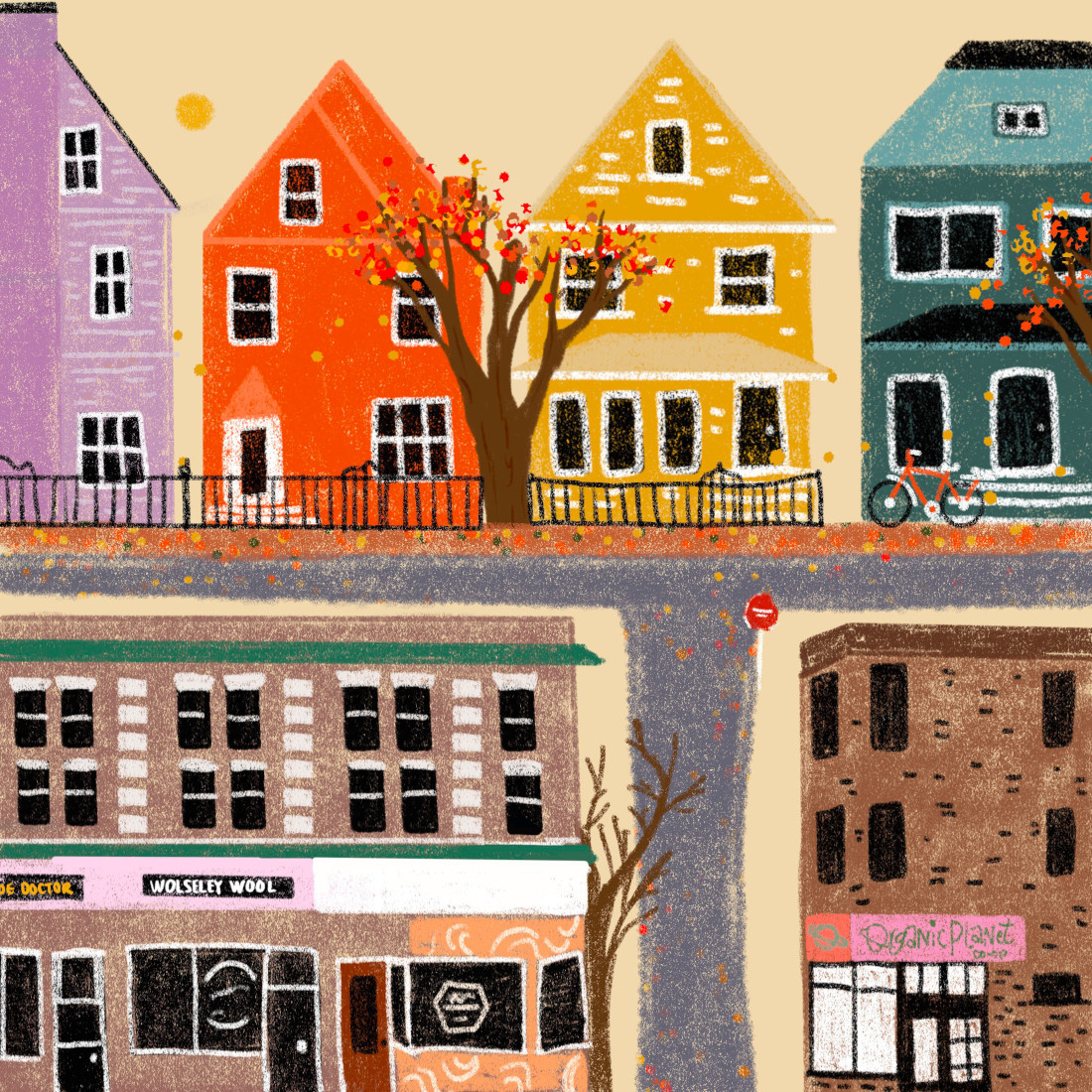Favourite Winnipeg neighbourhood
1. Wolseley
2. West Broadway
3. The West End
My first introduction to Wolseley wasn’t Tall Grass Prairie’s cinnamon buns or De Luca’s pasta but the neighbourhood’s eponymous Stella’s salad. Along with their toasted focaccia and copious amounts of coffee, this mix of spinach, brussels sprouts, radish, avocado, sprouts, chickpeas and seeds kept me (mostly) fed and alert through the final night classes of my undergrad.
Like Stella’s, the neighbourhood isn’t always as accepting, welcoming or progressive as it seems. “You think of Wolseley now as the granola belt, hippies, things like that, but back in the day, it was pretty conservative,” Wolseley Stories author Laina Hughes told The Uniter in 2013.
“One of the girls I interviewed for the book, her dad has lived in Wolseley since the ’50s, and he’s angry that the hippies have come and taken over his neighbourhood.” While the “hippie” label might not apply to all Wolseley residents, there’s no denying the area’s history of activism.
A blue plaque stands outside Wolseley’s 97 Chestnut St. to mark the former home of women’s-right activist Nellie McClung. A few years ago, residents launched at least one petition to rename Wolseley Avenue, Lord Wolseley School, Wolseley School and the neighbourhood itself.
Col. Garnet Joseph Wolseley was a colonist British military general who invaded Manitoba and suppressed Louis Riel’s Red River Resistance in the 19th century. As one renaming advocate told CBC in 2021, “while there is a place for this history to be taught, it’s not for commemoration on street names.”
It’s difficult to reconcile this violent history with the so-called “granola belt” and “incredibly diverse neighbourhood” Tourism Winnipeg describes as “the poster child of whimsical charm in Winnipeg.” Maybe that’s the point.
Wolseley isn’t just a collection of Instagrammable houses, independent grocery stores and meandering sidewalks. It’s a place with a past, a complicated legacy, just like almost anywhere else we call home.
Published in Volume 77, Number 12 of The Uniter (December 1, 2022)








